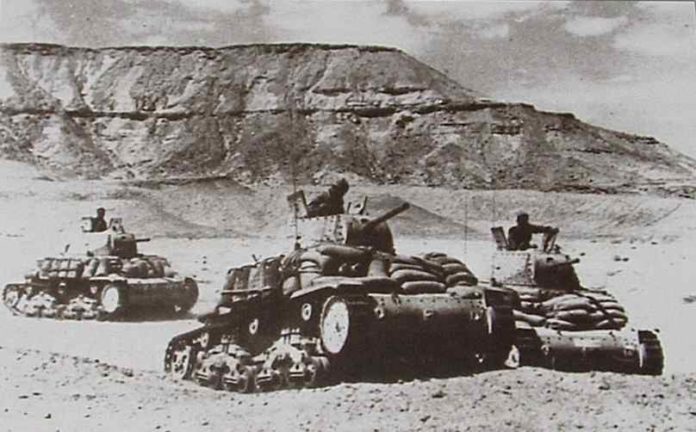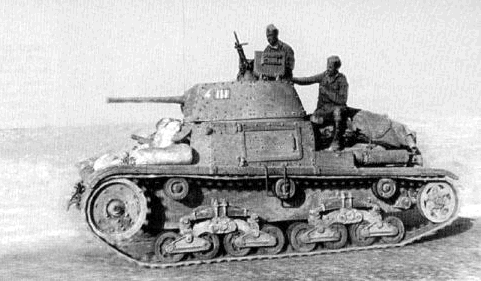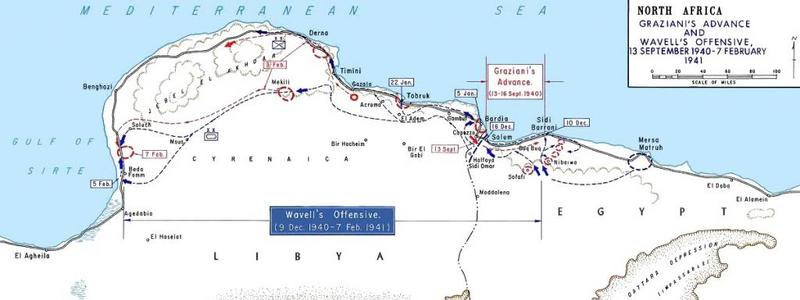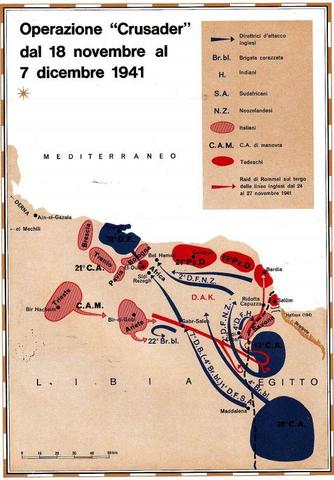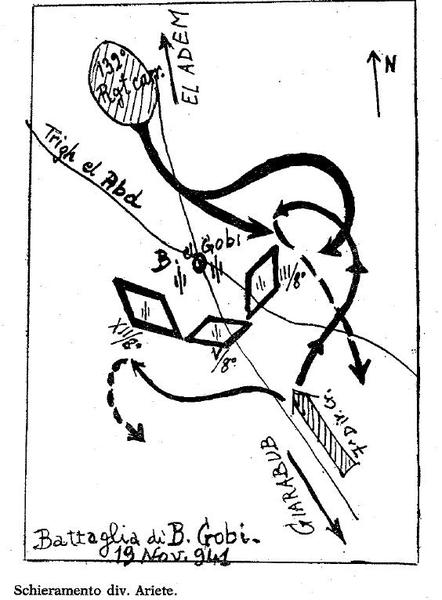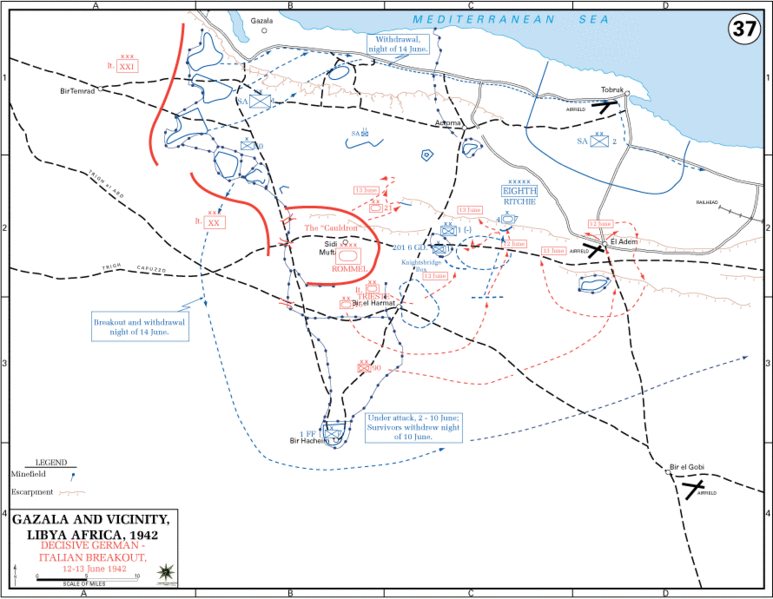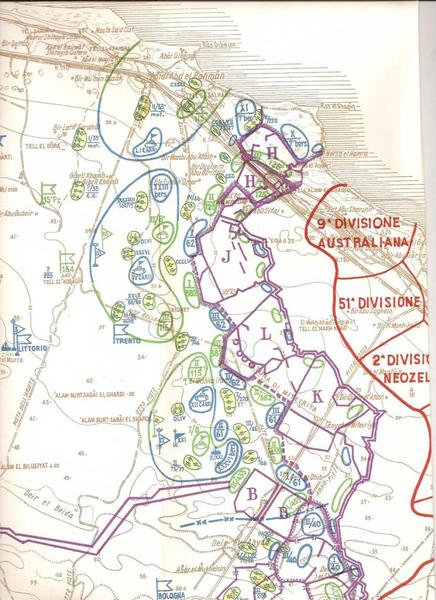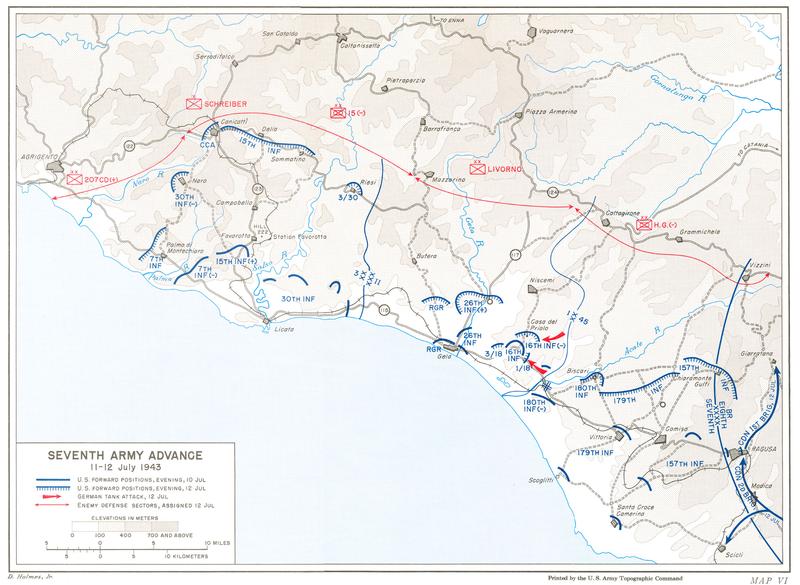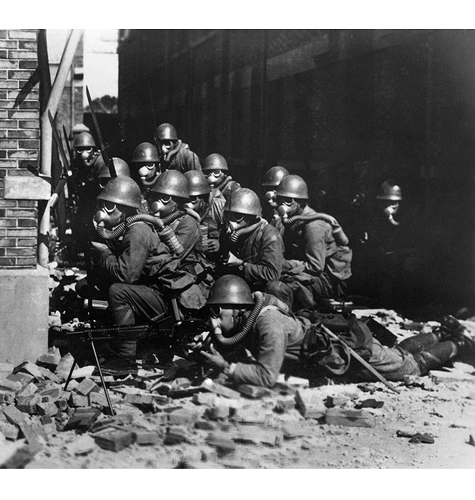Author: Vollketten (US server)
Hello everyone,
there is this notion sometimes being thrown around that Italian tanks didn’t fight as hard as their allied/other axis counterparts. This is obviously not true, Italian armor saw plenty of action in WW2 and despite being overshadowed by their German “cousins”, Italian tankers gave the Allies a run for their money on more than one occasion. In this case, Vollketten will be talking about the M13/40 tank action. I hope you enjoy it.
Tank Battles of the M13/40
Just to be clear: I did not write this, this is a piece of work from NA player Rivit who did all the work and who deserves all the credit. My assistance is with some minor editing and formatting for the purposes of putting it onto FTR. It appears in full on the NA forum as a thread here and if you have further information I’m sure Rivit would appreciate it. Enjoy.
From the pages of the British war diaries and the official histories of three nations, comes the forgotten story of the battles of Italy’s Fiat Ansaldo M13/40 from Derna Mechili and Beda Fomm, to Operation Crusader, the Gazala battles and El Alamein, through El Guettar Valley and to the hills of Sicily, the M13/40 and its brothers were there. For the men who fought and died, lost and won, and lived their lives within its hull, all that can be offered is the always incomplete, always forgotten, and always surprising tank battles of the M.13/40.
Chronology
Operation Compass – 9/12/1940 – 7/2/1941
Derna – Mechili tract – 24/1/1941
Beda Fomm – 5/1/1941 – 7/1/1941
Operation Brevity – 15/5/1941 – 16/5/41
Operation Scorpion – 26/5/1941 – 27/5/1941
Operation BattleAxe – 15/6/1941 – 17/6/1941
Siege of Tobruk – 10/4/1941 – 5/12/1941
Operation Crusader – 18/11/1941-1/6/1942
First battle of Bir El Gubi – 19/11/1941
Battle of Totensonntag (Sunday of the Dead) – 23/11/1941
Rommel’s dash to the wire and Sidi Rezegh – 24/11/1941
Sidi Rezegh retaken – 29/11/1941
2nd Battle of Bir el Gubi – 1/12/1941-4/12/1941
The Axis withdraw, from Gazala and beyond – 8/12/1941 – 21/1/1942
Rommel’s advance to Gazala – 21/1/1942 – 11/2/1942
The Gazala Battles – 26/05/1942 – 7/7/1942
Southern flanking attack – 27/5/1942 -29/5/1942
The Cauldron battles – 30/5/1942 – 6/6/1942
Fall of Bir Hachiem – 10/6/1942 – 11/6/1942
Battles South of Knightsbridge – 10/6/1942 – 12/6/1942
Fall of Tobruk – 20/6/1942 – 21/6/1942
Mersa Matruh – 25/6/1942 – 28/6/1942
1st El Alamein – 1/7/1942 – 10/7/1942
El Alamein, British counterattack – 10/7/1942 – 12/6/1942
Alam Halfa – 31/8/1942 – 4/9/1942
El Alamein, Montgomery’s attack – 23/10/1942 – 4/11/1942
Supercharge begins – 2/11/1942
Rommel begins withdraw – 4/11/1942
German and Italian reinforcements land in Tunisia – 9/11/1942
Coxen’s Farm – 25/11/1942
Rommel’s withdraw reaches Tunisia – 12/2/1942
Djebel el Hamra – 21/2/1943 – 22/2/1943
El Guettar valley/ Djebel el Mcheltat – 29/3/1943 – 8/4/1943
Axis surrender in Tunisia – 13/5/1943
Favarotta, Sicily – 11/7/1943
Canicatti, Sicily – 11/7/1943 – 12/7/1943
24/1/1941, Derna-Mechili tract
Although small numbers of M13/40s were present at both Bardia and Tobruk, no tank battles were reported. The first tank battle of the M13/40 occurred along the Derna-Mechili tract. A squadron of Mk.VI light tanks stumbled into a group of M13/40s and retreated under-fire. Six Mk VIs were knocked out and the pursuing M13/40s fell into an awaiting ambush. In the ensuing battle, a single A9 cruiser tank was knocked out, while nine M13/40s were destroyed.[1]
Outcome/Losses: 9 x M13/40s / 7 x British tanks (6 lights and 1 cruiser)
5/1/1941-7/1/1941, Disaster at Beda Fomm
O’Conner cuts off the Italian retreat from Cyrenaica and wipes out the remaining Italian armor force. Only four Italian Medium tanks and about thirty lorries manage to break through the southern roadblock. Sent in piecemeal, often attempting to fire on the move, the M13/40s were destroyed one group at a time. Sources vary over the number of Italian medium tanks (M13/40 and M11/39s) knocked out from tank vs tank fights. Osprey’s ‘Operation Compass’ claims between twenty to forty[2] and ‘Australia in the War of 1939-1945’ places the number at around sixty.[3] The rest were knocked out, captured, or abandoned from engagements with antitank guns, portees (truck mounted AT guns), and artillery.
Outcome/Losses: 112 x M13/40s and M11/39s [4] / 8 x Cruisers from breakdowns and artillery
Map of Operation Compass:
10/4/1941, Siege of Tobruk, multiple dates / multiple battles
10/4/1941 to 11/4/1941, During a long range tank battle along the Tobruk perimeter, one M13/40, a German medium tank, and three light tanks (L3s) are knocked out for the loss of two British medium tanks. [5]
Outcome/Losses: 1 x M13/40 / 1 x British Med.
17/4/1941
Antitank rifles and AT guns, later joined by cruiser tanks, capture one M13/40 and four light tanks. That evening, it appears the cruisers knock out three more tanks, until the Rommel papers reveal a friendly fire incident in the same location at the same time.[6]
Outcome/Losses: 1 x Italian Medium tank captured / 0 British tank losses recorded
13/12/1941, The Relief of Tobruk, Point 204, Late Operation Crusader
Nine “I” tanks, three cruisers of 1RTR, and a troop from the 31st Field Regiment, RA help repulse an attack, at midday, by ten to twelve tanks (wrongly reported as German) and claimed to put three of them out of action. Fifteen Italian tanks renew the attack and overrun a troop of six 25-pounders.[7] This is one of the only tank engagements I have been able to find between the British ” I” tanks (Matildas/Valentines) and the M13/40.
Outcome/Losses: 3 x Italian tanks (claimed only) / 0 British tank losses recorded
Map of Operation Crusader:
19/11/1941, Bir el Gobi(Gubi)
The opening move of Operation Crusader found the 22 Armoured Brigade launching an attack against the Ariete’s fixed positions at Bir el Gobi. Before long, truck mounted artillery claimed about fifteen cruiser tanks. Meanwhile, Ariete’s M13/40s launched a counterattack into the tanks of the 22 Armoured Brigade. The tank losses for the Italians are widely known and accepted. Thirty-four M13s are knocked out and fifteen more suffered repairable damage and mechanical breakdowns. Eight M13/40s were reported in base workshops at the start of the battle. The British losses are still debated to this day. While British war diaries reveal accurate losses for the 6RTR and 4CLY, the losses suffered by the 3CLY are not completely revealed in their war diary. One squadron reports four tanks lost, but other squadrons seem to vanish from the pages for several days. Correlli Barnett’s, ‘The Desert Generals’ places the British losses at fifty-two[8]. The British retrieved some of their knocked out tanks during the night, further complicating any accurate counts. Although the battles importance should not be exaggerated, it was the first time the British faced a fully fledged Italian tank division.
Outcome/Losses: 29 x M13/40, 5 x Light tanks / 52 x British cruiser tanks
Map of Bir el Govi:
21/11/1941, Area around the aerodrome at Sidi Rezegh
During the morning, 6RTR launches an attack from the southwest corner of the Sidi Rezegh aerodrome.
The 6RTR war diaries claim five Mk.II German tanks, one M13, and several guns destroyed. However, Agar- Hamilton, and Turners, ‘The South African Official History’ claim these were actually L3 tankettes/light tanks.[9]
Outcome/Losses: ? / ?
23/11/1941, Battle of Totensonntag (Sunday of the Dead), Sidi Rezegh [10][11]
After spending the next several days in the area of Bir el Gubi, Ariete finally comes under German command (the first time during Operation Crusader). Meeting the 15th PZ. Division coming from the northeast, Ariete falls behind (the 3CLY war diaries reveal they were refueling). While the tanks of the 15th PZ. Division plunge into the guns of the 5th South African Brigade, Ariete clashes with a composite regiment of “some thirty” British tanks (remnants of previous battles)[12], including eight from 3CLY. The tank battle erupts at 800 yards when, for some unknown reason, Lt. Col. WG Carr orders his tanks to assault from left to right across the path of Ariete’s sixty M13/40s. The composite regiment is left with only four battle worthy tanks, down to one towing another the next day. Later, they were joined by two more tanks from a separate leaguer.
Outcome/Losses: 0 Italian Tank Losses recorded / 24 x British tanks knocked out
Following the Battle of Totensonntag, over the next several days, the British began receiving replacements from a reserve of about two-hundred tanks. By November 27th the 22nd Armd. Bde. had been rebuilt to a strength of forty-two Crusaders and 4th Armd. Bde. rebuilt to seventy-seven tanks[13].
30/11/1941, The area of Pt.175 (North of Bir Reghem)
Keeping a corridor open for the New Zealanders and the 1st S. African Brigade, tanks of the 4th Armoured Brigade then advance north. Twenty-six Stuart tanks fell on an Italian tank group, knocking out thirteen M13/40s and five light tanks, for no loss to themselves.[14]
Outcome/Losses: 13 x M13/40s / 0 British tank losses recorded
1/12/1941, Pt.175
The next day, the 11th Hussars war diary states that the 4th Armd. Bde. was having “a very rough time”, while engaged by approximately ten M13/40s. No British losses are given and the RHA (Royal Horse Artillery) eventually engaged the M13/40s with “marked success”.
Outcome/Losses: ? / ?
12/12/1941, Area NW of Mtgataat el Adam
2RGH war diaries report one M13/40 knocked out by H squadron when it returns from “Currie” Column, somewhere NW of the unit leaguer.
Outcome/losses: 1 x M13/40 / 0 British tank losses recorded
The Gazala battles and the Cauldron
Unfortunately, for the beginning and middle of the Gazala Battles, including the Cauldron, the British war diaries cease. The war diaries of Individual British units are unavailable online, or missing altogether. A useful tool for determining the whereabouts of the M13/40 can be found here: General Major Alfred Toppe, ‘German Experiences in Desert Warfare During World War II’:link
Although useful for both the Crusader and Gazala Battles, be warned, the mentioned tank losses on a specific date are only for the British. Italian armor engaged in several tank battles on various dates and served in “The Cauldron”.
10/6/1942, South of Knightsbridge, Semovente 75/18 vs the Grant [15][16]
In his Book, ‘Italian Armored Vehicles of World War Two’, Nicola Pignato briefly describes a battle at Bir Hakeim (Hacheim) between Semovente 75/18s and about forty Grants, leaving twenty British tanks destroyed. Actually, the battle in question occurred between Bir Hacheim and Knightsbridge, on the 10th of June 1942.
Lined up abreast thirty Grants and ten Stuarts, from both the 6th and 1st RTR, launched an attack on a position held by the Ariete. On the British right, 6RTR came under fire from some tanks and truck mounted guns, while on the left (1RTR), a tank attack was reported at 10:30. When it is over three Grants and two Stuarts from 6RTR are knocked out and twelve Grants and three Stuarts from 1RTR are lost. Later that night, tanks from the 15 and 21 PZ. Div. arrive and shoot up several trucks and five or six more tanks. Author Liddell-Hart claims the British only lost sixteen, but appears to only be counting the losses from 1RTR.
Outcome/Losses: 2 x M13/40s / 15 x Grants and 5 x Stuarts (20 total)
12/6/1942, South of Knightsbridge, Trieste’s M13/40s and the Grants
Capt. Buxton and his Crusader from 3CLY are sent out to meet a squadron of ten Grants from the 4th Hussars. Together they attempted to engage a group of eight armored cars and nine M13/40s of the Trieste Mot. Division. Ten tanks were overwhelmed by a large number of Italian tanks and destroyed, minus a single Grant which managed to escape. Capt. Buxton and his crew were captured and remained prisoner until they managed to escape the following day. The war diaries of the 3CLY report Capt. Buxtons version, while the 4th Hussars war diary claims it was twelve Mark IIIs and eight Mark IVs supported by eight 88 millimeters and 50mm guns. It is possible the single frantic Grant believed German tanks must have done the damage, but Capt. Buxton was captured and remained in the area, making him a far more reliable witness.
Outcome/Losses: 0 Italian Tank Losses recorded / 9 x Grants and a single Crusader (10 total)
Map of Gazala battles:
30/6/1942, Alam el Tamr, The Grant strikes back
Following the the Gazala Battles and the fall of Tobruk, Grants from both the 6RTR and 3rd County of 4th County of London Yeomanry engage in two separate battles with a surprised Italian column that wandered too far east. The 6RTR claimed two M13/40s knocked out while the 4CLY destroyed ten.
Outcome/Losses: 12 x M13/40 / 0 British tank losses recorded
15/7/1942-16/7/1942, Area of El Ruweisat
Although the 9th Lancer’s war diaries are unavailable, their actions are included in the 2RGH and 6RTR war diaries for July 15th.
Two tanks from the 9th Lancer were destroyed (according to the 2RGH war diaries from AT guns, but according to 6RTR diaries it was a tank attack) and one Crusader from the 6RTR was knocked out. One M13/40 was knocked out on the 15th and either a M13/40 or a captured Grant was knocked out on the 16th. July 15th was the day the New Zealand Div. grabbed around two-hundred prisoners and several guns from the Ariete.
Outcome/Losses: 1 x M13/40 + 1 x M13/40 or captured Grant / 3 x Crusaders
El Alamein and the long retreat
2/11/1942, Tel el Aqaqir
From the war diaries of the 11th Hussar and 4CLY, fifty enemy tank losses are reported as a result of battle with the 22nd and 8th Armd Bde.
The 15th Pz.Div. and Littorio participated in a counter attack on this day.
Outcome/Losses: 50 x German and Italian tanks / ? British tank losses
3/11/1942, El Alamein
By November 3rd the 15th PZ. Div had ten tanks left, the 21st Pz .Div only fourteen and The Littorio Armour Div. had seventeen tanks.[17]
4/11/1942, Ariete’s last signal[18]
On the day Ariete was overwhelmed, only twenty-nine tanks fell during its last broadcast.* Another forty tanks were captured in their repair workshops. The rest of Ariete was destroyed the next day after clashing with the 7th Armour Division.[19]
[*At 15:15 hours that day 4th November surrounded by the British the Ariete Division sent it’s last message:
“Enemy tanks broke us through the south. The Ariete, surrounded; we are now 5 km North-East of Bir el-Abd.
We are going to fight until the final destruction of our last tank.Viva Italia!”]
Map of El Alamein:
4/11/1942, West of Dier Murra
Again reported from the 11th Hussars and 4CLY, the 1RTR, 5RTR, and 4CLY engage and knock out ten M13/40s for no loss to themselves.
Outcome/Losses: 10 x M13/40s / 0 British tank losses recorded
5/11/1942, Escape from El Alamein
“A” Sqn, 11th Hussars captured five M13/40s and knocked out two more. “B” Sqn. witnesses twenty German and Italian tanks attack Calal from the east and are all destroyed.
Outcome/Losses: 25 x German and Italian tanks / 0 British tank losses recorded
14/12/1942, El Aghelia
“A” Sqn. 11th Hussars witnessed a battle between M13/40s and the Sherwood rangers, the 3RTR and the Staff Yeomanry. Seven M13/40s are seen brewed up. Regimental HQ claims twelve M13/40s destroyed.
Outcome/losses: 7-12 x M13/40s / ? British tank losses
11/11/1942 , Fort Capuzzo and the road to Bardia
Several M13/40, Semovente 75/18, and L6s totaling eight tanks are found abandoned by elements of the 4CLY. Two Cruisers are reported lost from artillery and anti tank fire.
Outcome/Losses: Not all of the Italian tanks were lost at El Alamein.
25/11/1942, Coxen’s Farm
The Chieftain’s Hatch already covered the following battle:
http://forum.worldoftanks.com/index.php?/topic/72635-chouigui-pass/
At Coxen’s farm two Semovente 47/32s are knocked out by Stuarts. One Stuart is lost by AT fire.
Outcome/Losses: 2 x Semovente 47/32 / 1 x Stuart
21/2/1943, Djebel el Harma
The American 9th Infantry and 13th Armored Regiment halt the Centauro and 15th Panzer Division. This battle is widely known, but finding losses for the Centauro’s M14/41s has proven difficult.
The Italian tank losses were most likely twenty-three M14/41s incorporated into a DAK assault group.
Outcome/Losses: Most likely 23 x M14/41s / 0 British tank losses recorded
30/3/1943 – 10/4/1943 – Djebel Berda , Djebel el Mcheltat (El Quettar Valley), Centauro and Benson Force
For over eight days the Centauro and Bersaglieri held back Benson Force and the 9th Infantry Division. During the first assault, Benson Force loses five M3 Lees to mines and enemy fire. During the next attempt on the 31st, nine M3 Lees and two half-track tank destroyers are knocked out from AT-fire, mines, and a flanking attack from Centauro’s sixteen remaining tanks, including two Semovente. Six M14/41s are lost during the counter-attack.
Outcome/Losses: 6 x M14/41s / 9 x M3 Lees
Map of El Guettar Valley
10/7/1943, Position 9147, Invasion of Sicily
Still investigating (unconfirmed)
Between midnight on July 10th and midnight on July 11th, the 15th Infantry Division advances north along Highway 123. Running into position *9147, two Semovente da 90/53s and a light tank are discovered abandoned after an artillery strike.
*Position 9147 doesn’t match any elevation in the area. Most likely, it’s the fire designation numbers used while calling for fire. This area possibly matches Monte Morotta.
Outcome/Losses: 2 / —
11/7/1943, Favarotta, Sicily
Still investigating (unconfirmed)
After landing at Licata, The Americans begin to advance north as part of the plan to provide a guard for Monty’s flank. They reach Favarotta and a four hour battle ensues.
Outcome/losses: Several armored vehicles and tanks (claimed) / 2 x Semovente da 90/53 (claimed by half-tracks)
11/7/1943-12/7/1943, Canicatti, Sicily, Captain Perkins and the Semovente da 90/53
On the 11th of July, three M4 Shermans are lost while attempting to advance down the forward slope of ridge “A”. Before nightfall, a combined artillery/tank fire-for-effect on a village forces the loss/abandonment of four Semovente 90/53s. On the 12th, two more Shermans are lost outside Canicatti.
Outcome/Losses: 4 x Semovente da 90/53 / 5 x Shermans
Although there are plenty of other tank battles, especially during the Gazala period, these are the tank battles that are available and accessible online. The compilation will always be incomplete. For those interested, Ian Walker’s ‘Iron Hulls, Iron Hearts’ provides a thorough account of Italian tank battles.
Map of Favarotta and Canicatti
Sources:
[1] Jon Latimer, Operation Compass 1940: Wavell’s Whirlwind Offensive, Osprey, 2000, pg.65
[2] ibid, pg 80, Gavin Merrick, Australia in the War of 1939-1945,Series I – Army, Vol.1 To Benghazi, pg.270: http://static.awm.gov.au/images/collection/pdf/RCDIG1070233–1-.PDF
[3] ibid, pg. 270-271
[4] ibid, pg 272
[5] Barton Maughan, Australia in the War of 1939-1945,Series I-Army, Vol.III, Tobruk and El Alamein, (1st edition ,1966) Chapter 4, At Bay – the Easter Battle, pg 134
[6] ibid, pg. 168, http://www.awm.gov.au/histories/second_world_war/AWMOHWW2/Army/Vol3/
[7] From W.E. Murphy, The Official History of New Zealand in the second World War 1939-1945, Chap. 26 – Gazala and Beyond pg.499
[8] Correlli Barnett, The Desert Generals, pg. 97
[9] Agar-Hamilton and Turner, South African Official History, no page number
[10] Andreas,The Crusader Project, Ariete’s Contribution to the Battle of Totensonntag(Sunday of the Dead) Sidi Rezegh:
http://rommelsriposte.com/2013/08/10/arietes-contribution-to-sidi-rezegh-di-nisio-column/
[11] War diaries of the 3CLY
[12] Agar-Hamilton and Turner, South African Official History, pg 231
[13] Ibid,” ”
[14] 7th Armoured Division, Engagements 1941http://www.desertrats.org.uk/battles1941.htm#Crusader
[15} 1RTR site (war diaries unavailable online):http://www.1rtr.net/frontpage.html
[16] War Diaries of the 6RTR
[17] David Irving, The Trail of the Fox, pg.277
[18] 7th Armoured Division, Engagements 1942: http://www.desertrats.org.uk/battles1942.htm
[19] Playfair I.S.O: and Molony, Brigadier C.J.C.; with Flynn R.N., Captain F.C. & Gleave, Group Captain T.P. (2004) [1st. pub. HMSO 1966]. Butler, J.R.M, ed. The Mediterranean and Middle East, Volume IV: The Destruction of the Axis Forces in Africa. History of the Second World War United Kingdom Military Series. Uckfield, UK: Naval & Military Press. pg.78-79
Other Sources:
• 2RGH War Diaries: http://www.warlinks.com/armour/2nd_rgh/index.php
• 3CLY War Diaries: http://www.warlinks.com/armour/4_cly/index.php
• 4th Hussars War Diaries: http://www.desertrats.org.uk/WarDiaries/4th_Hussars/index.htm
• 6RTR War Diaries: http://www.warlinks.com/armour/6th_royal_tank/index.php
• 11th Hussars War Diaries: http://www.warlinks.com/armour/11_hussars/index.php
• Montecuccoli’s war reports of the Italian High Command “Ballettini di guerra”
• The Italian Army in WW2 pg.9: http://forum.panzer-archiv.de/viewtopic.php?t=3653&postdays=0&postorder=asc&start=120
• CGH-5th Bersaglieri Regiment, Unit History in North Africa: http://home.earthlink.net/~frenchgreg/id2.html / http://en.wikipedia.org/wiki/Battle_of_Kasserine_Pass
• George F. Howe, Hyperwar: U.S.Army In WWII: Northwest Africa: Seizing the Initiative in the West, Chapter XXIX, II Corps Operations Beyond El Guettar, Pg 571: http://www.ibiblio.org/hyperwar/USA/USA-MTO-NWA/USA-MTO-NWA-29.html
• II corps AAR,10 APR 43,1st Armd. Regt. AAR, 10 JUL 43, Patton Diary,31 Mar.43
• CGH- 5th Bersaglieri Regiment, Unit History in North Africa: http://home.earthlink.net/~frenchgreg/id2.html
• Combined Arms Research Library Digital Library, After Action Report 81st Armored Recon Battalion pg.60: http://cgsc.contentdm.oclc.org/utils/getfile/collection/p4013coll8/id/3642/filename/3652.pdf
• Report on Operations Conducted by the 9th Infantry Division, 26 Mar 1943-1 July 1944:pg.6 http://cgsc.contentdm.oclc.org/utils/getfile/collection/p4013coll8/id/30/filename/19.pdf
• Appendix C, Report on Artillery Operations, Section #29 of El Guettar report, pg.2 http://cgsc.contentdm.oclc.org/cdm/singleitem/collection/p4013coll8/id/5/rec/3
• Operations report, 3rd Infantry Division, Sicilian Operations ,pg.11 http://www.ibiblio.org/hyperwar/USA/USA-MTO-Sicily/USA-MTO-Sicily-6.html
• Hyperwar: US Army in WWII: Garland & Smith, Sicily and the Surrender of Italy, Part II, Operations and Negotiations, Chapt VI: The Assault, pg. 128
• Diary of the 10th Grouping Self-propelled antitank
• Garland and Smith, Hyperwar: U.S Army in WWII Sicily and the Surrender of Italy, Chapter X ,The Beachhead Secure. Pg 191, pg 195-196 http://www.ibiblio.org/hyperwar/USA/USA-MTO-Sicily/USA-MTO-Sicily-10.html
• Combined Arms research Library Digital Library, Lessons of the Sicilian Campaign: pg 50 http://cgsc.contentdm.oclc.org/utils/getfile/collection/p4013coll8/id/2441/filename/2424.PDF
• Cpt. Perkins, Armor Magazine May-June 1987
• Lessons learned in the attack on Canicatti. pg 32, pg. 36 http://www.benning.army.mil/armor/eARMOR/content/issues/1987/MAY_JUN/ArmorMayJune1987web.pdf
• Lessons from the Sicilian Campaign. pg50 http://cgsc.contentdm.oclc.org/utils/getfile/collection/p4013coll8/id/2441/filename/2424.PDF
Captured from: http://ftr.wot-news.com/2014/04/09/tank-battles-of-the-m1340-italian-tank/
Pubblicazione gratuita di libera circolazione. Gli Autori non sono soggetti a compensi per le loro opere. Se per errore qualche testo o immagine fosse pubblicato in via inappropriata chiediamo agli Autori di segnalarci il fatto è provvederemo alla sua cancellazione dal sito

